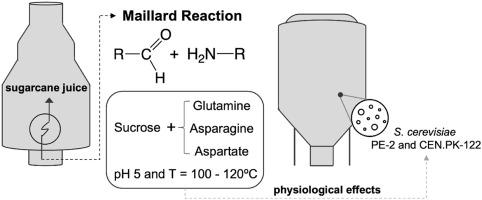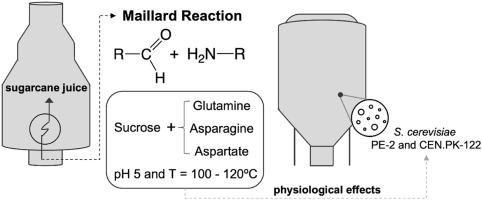Effects of caramelization and Maillard reaction products on the physiology of Saccharomyces cerevisiae
Abstract
The thermal treatment the sugarcane juice undergoes during its processing alters the medium's chemical composition through the so-called Maillard reactions and its products, which can affect the alcohol-producing yeast's physiology in steps following the processing. This study aims to describe and characterize the reactivity of the primary amino acids present in sugarcane with sucrose, as well as demonstrate the physiological effects of the reaction's products on the yeast Saccharomyces cerevisiae. The main amino acids in sugarcane (glutamine, asparagine, and aspartic acid) were chosen to be reacted with sucrose under similar conditions to the industrial sugarcane processing (pH 5 and temperature 100–120 °C). The physiological effect of Maillard and caramelization reaction on the S. cerevisiae CEN.PK-122 and PE-2 strains were tested in microplate experiments using a modified mineral media containing both the reacted and unreacted amino acid-sucrose systems and four modified synthetic molasses media. The results have shown that the presence of any amino acids drastically increases product formation. Furthermore, among the amino acids, aspartic acid was the most reactive. Meanwhile, asparagine and glutamine had similar results. In S. cerevisiae physiology, aspartic acid had the most significant effect on culture growth by reducing the maximum specific growth rate and optical density. The increase in the Maillard product concentration for synthetic molasses also evidenced the inhibitory effect on yeast growth compared to media in the absence of these products. We conclude that this initial investigation clarifies the inhibitory effect of the Maillard products on yeast physiology.



 求助内容:
求助内容: 应助结果提醒方式:
应助结果提醒方式:


